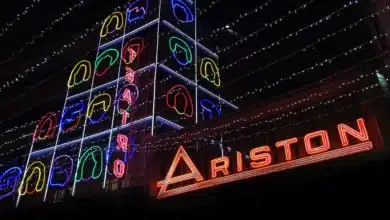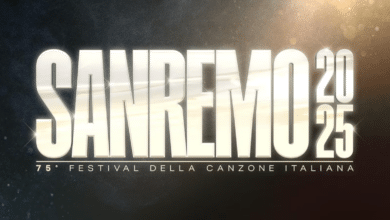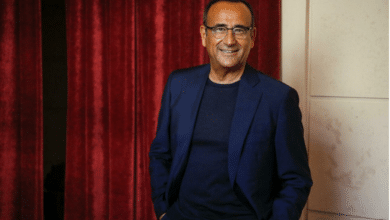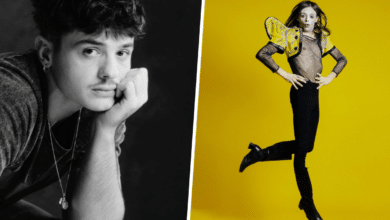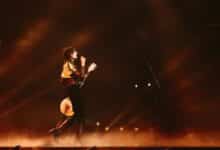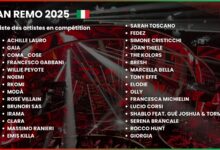The history of the Sanremo Festival: a journey to the heart of Italian music
The Italian Song Festival, now known as the Sanremo Festival (in Italian Festival della Canzone Italiana di Sanremo) is Italy's oldest music festival and was the inspiration for the creation of Eurovision. In fact, it was while attending Sanremo that an official from the European Broadcasting Union had the idea of launching Eurovision in 1956!
Broadcast and organised by Rai since 1951, it is the most watched programme on Italian public television. It was joined by PUBLISPEI between 1979 and 1988 and again in 1992 and 1993. OAI joined Rai from 1989 to 1991.
The Sanremo Festival is one of the most important musical events of the year for Italians. The festival is not only a celebration of Italian music, but also a cultural phenomenon that has shaped the country's music industry over the decades. Here's a look back at the fascinating history of a festival that has never ceased to make its mark.
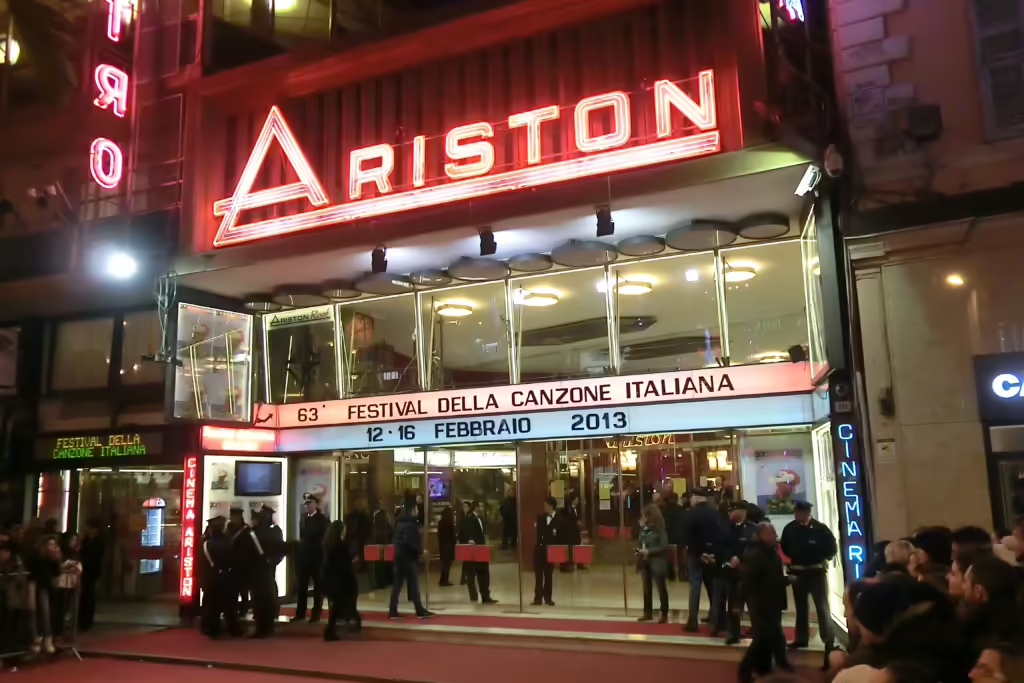
The beginnings
The Sanremo Festival was created in 1951 by a committee of the Sanremo municipality, with a central role played by Giulio Razzi, a director of the Rai. The initial idea came from Pier Busseti, then director of the Sanremo casino, who wanted to attract more visitors to the town by creating a large-scale musical event, as Sanremo, like many seaside resorts, was popular during the summer season but quieter in winter.
Pier Busseti quickly realised the importance of television in promoting his festival, so he managed to involve the Rai from the very first edition. It was held for the first time on 28 January 1951 with just three participants. In its early years, the Sanremo Festival was broadcast on Rete Rossa (Rai Radio 1). It was not until 1955 that it was broadcast live on Italian Rai.
It is important to point out that the Sanremo Festival was not created to select Italy's representative at Eurovision. Although Sanremo was first used as a selection for the Eurovision Song Contest in 1956, it is only since 2015 that the winner of Sanremo has been systematically invited to represent Italy at Eurovision. Prior to that date, the Italian selection process was often internal, with the Sanremo winner sometimes not taking part in Eurovision, or even the artist chosen performing a different song from the one he or she presented at Sanremo. Sanremo is first and foremost a cultural event for Italy.
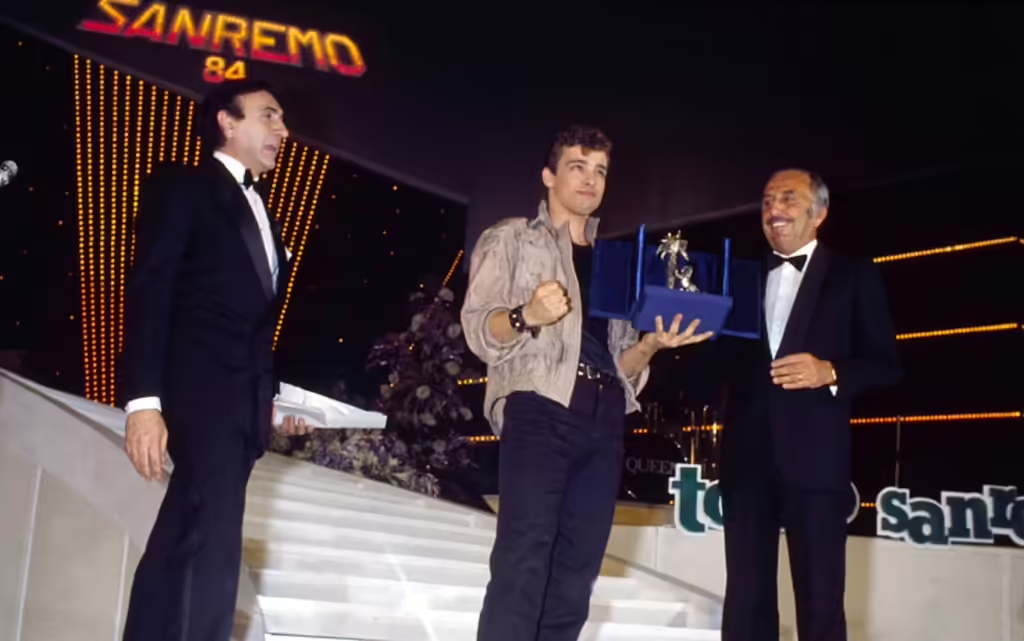
The festival was held at the Casino de Sanremo until 1977, then at the Ariston theatre on the Ligurian Riviera from 1977 onwards.
Over the years, the festival has evolved to showcase artists from all styles, all regions of Italy and even international artists. The careers of many of them have taken off thanks to Sanremo: Toto CutugnoLaura Pausini, Eros Ramazzotti, Andrea Bocelli, Måneskin, …
Today, the Sanremo Festival is considered one of the biggest pop music festivals in Italy. Every year, over 10,000 spectators flock to Sanremo to attend the week-long competition.
Between 1993 and 1998, then in 2001 and 2002, and finally between 2015 and 2018, some participants are selected during the "Sanremo Giovani »" programme (reserved for emerging singers) usually held at the end of the previous year. Since 1998, the "Area Sanremo »" competition has also acted as a partial selection for the "Nuove Proposte »" section.
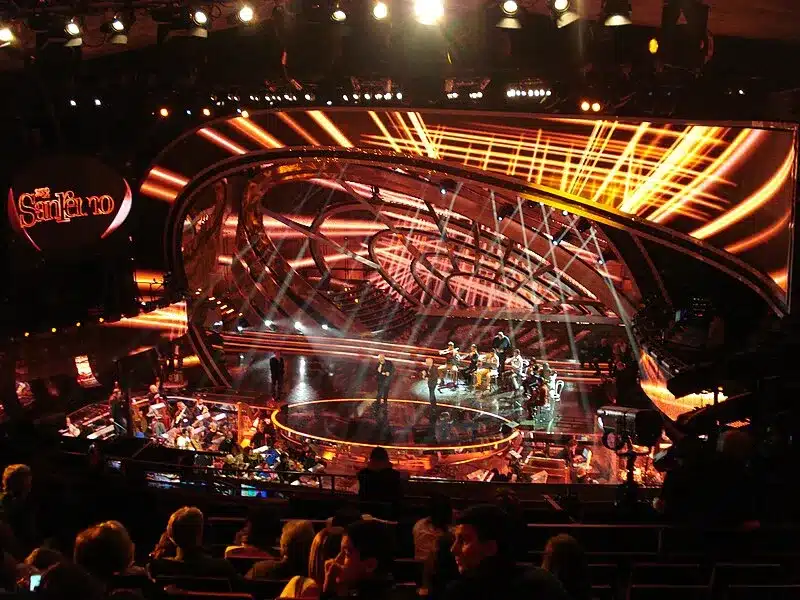
Over time, the festival has also evolved to include international guests, reinforcing its cosmopolitan character. Over the years, global stars such as Sting, Elton John, Tony Bennettor Lionel Richie were invited to take part, giving the festival a more global dimension.
Candidate selection process
The festival is open to artists wishing to sing songs in Italian and Italian dialect. Artists must submit their songs to a panel of judges who assess their performances and compositions. Online applications for the standard selection are opened a few months before the Festival.
The songs with the most potential are selected by a music committee made up of professionals. This committee is co-chaired by the director of Rai. These will then go on to an audition where 24 songs will be selected to compete at Sanremo.
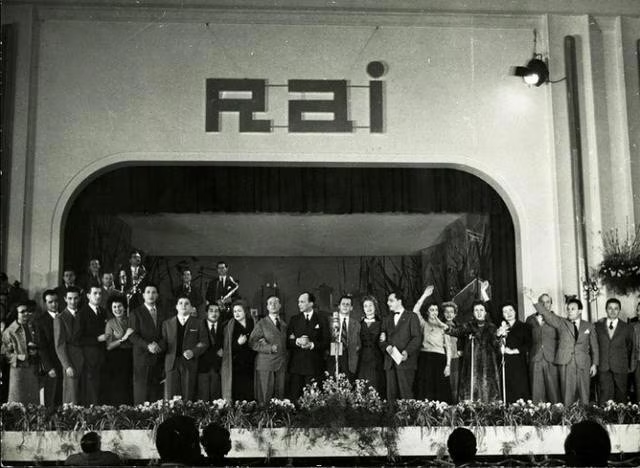
Organisation of the Sanremo Festival and voting system
Nowadays, the Sanremo Festival takes place every year in February, over four consecutive nights.
- On the first evening (usually Tuesday), the public will be introduced to the 24 competing artists. Each of the 24 artists will perform a song in Italian. These performances will be judged by a jury made up of journalists from the written press, television and online media. This initial assessment will be decisive in establishing the overall ranking.
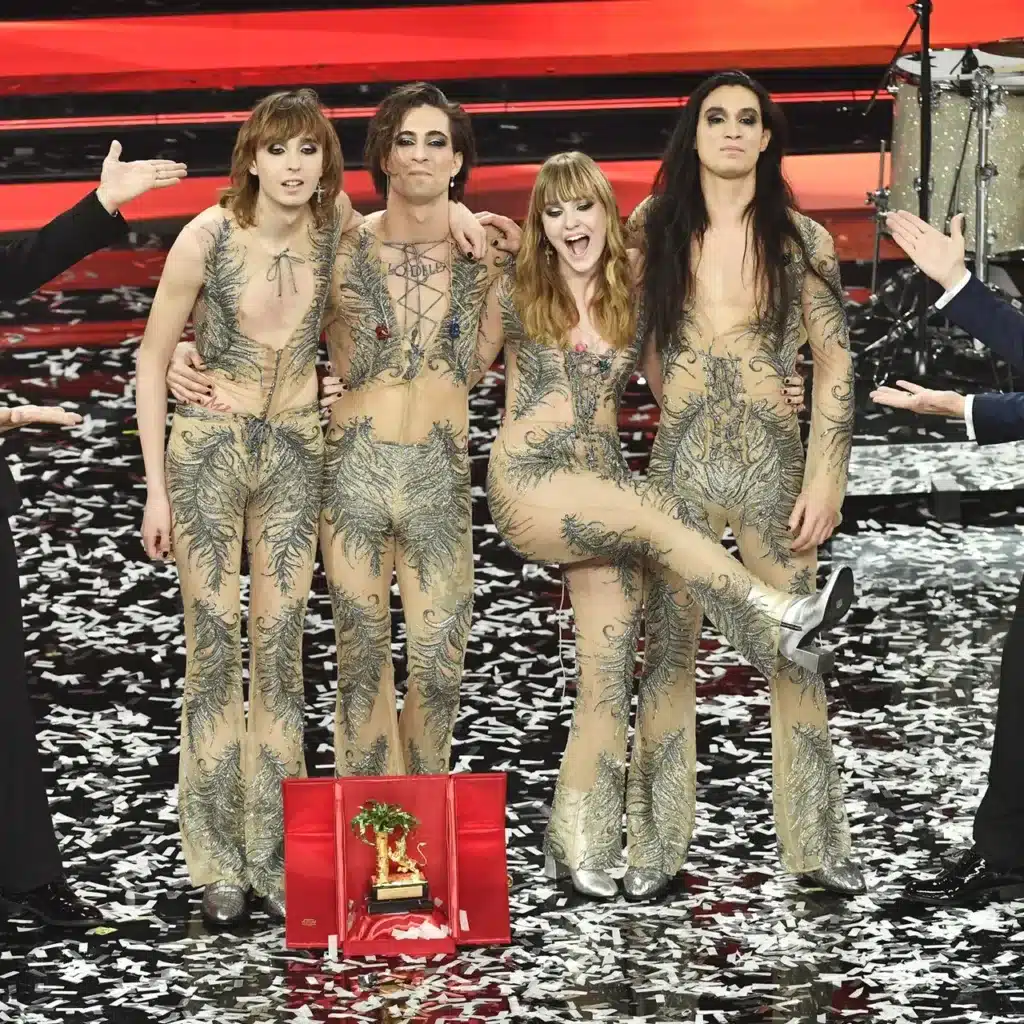
- Then, on Wednesday, 12 of the 24 artists will perform again, while the other 12 will perform on Thursday. At this stage, the votes will be split equally between the public and a jury of radio professionals. This mixed voting system (50% public, 50% radio jury) will ensure a fair assessment between popular opinion and professional criticism.
- In addition, during these two evenings, there will be a semi-final for the "New » Proposals". Four young artists will compete, two each evening. The winner of this semi-final will be the first to qualify for the final in this category. A second battle will take place later in the evening to decide the second finalist.
- Then, on the fourth evening (Friday), there are the covers, where the 24 artists revisit Italian and international music classics, with the participation of a special guest. The performances will be judged by different juries, the public, the press/web jury and the radio jury, with each type of vote having a specific importance: 34% for the televote, 33% for the press/web and 33% for the radio. The evening's winner will receive the prize for the best cover. This evening also sees the final of the "New » Proposals". The two finalists will go head-to-head to decide who will be crowned the best young talent of the 2025 edition, using the same voting system as for the Covers.
- Finally, on the fifth night, the grand final takes place. The 24 songs will be performed again, and the votes from this evening will be added to those from the previous evenings to establish an overall ranking. The five highest-scoring artists will be selected for a final performance. The vote will then be reset to zero and opened again. After these five performances, a winner will be chosen.
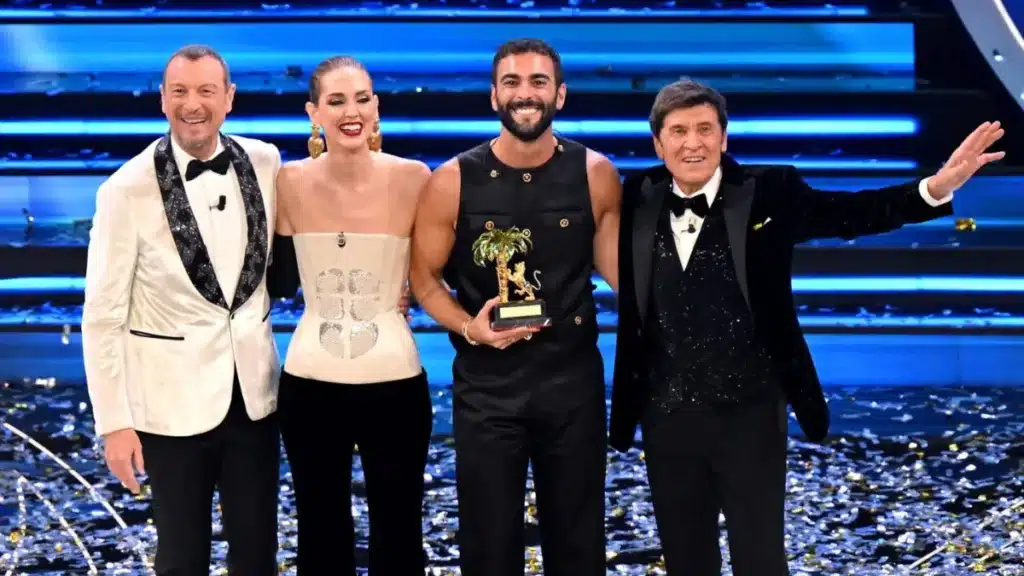
The winner of the Sanremo Festival is then determined by a vote from the public (34%), a vote from the broadcasters' jury (33%) and a vote from the press jury (33%).
Finally, the RAI asks the winning artist whether or not they would like to represent their country in the competition. Confirmation of the artist's participation is usually given shortly after the announcement of the result and at the official press conference organised by the RAI the following afternoon.
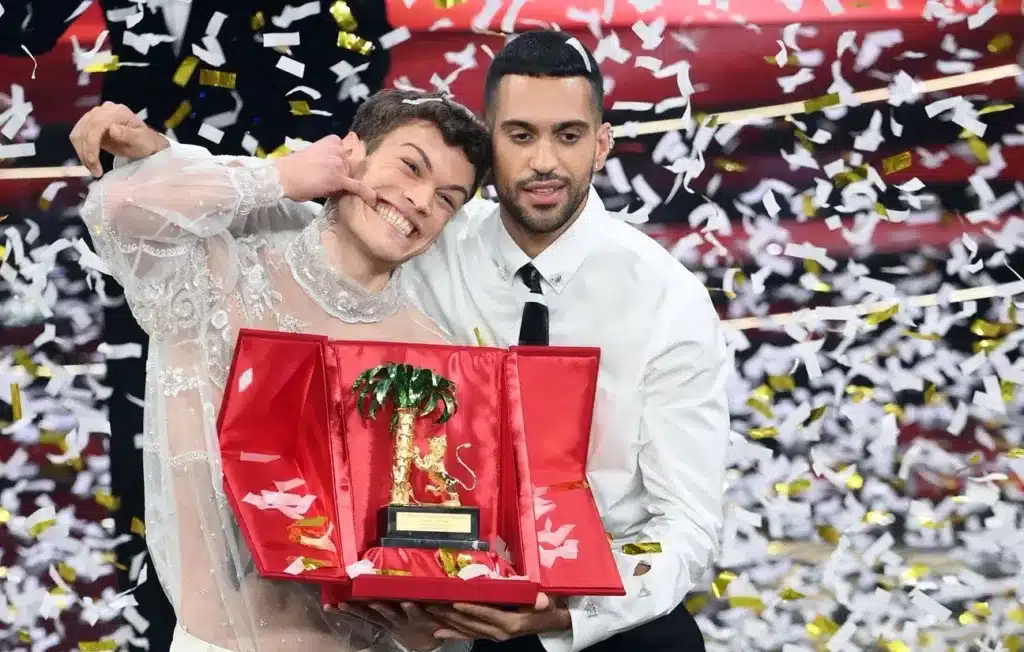
Winners of the Sanremo Festival
Here are ALL the winners of the Sanremo Festival since 1951:
| Year | Singer(s) | Song |
|---|---|---|
| 2024 | Angelina Mango | La noia |
| 2023 | Marco Mengoni | Due vite |
| 2022 | Mahmood & Blanco | Brividi |
| 2021 | Måneskin | Zitti e buoni |
| 2020 | Diodato | Fai rumore |
| 2019 | Mahmood | Soldi |
| 2018 | Ermal Meta & Fabrizio Moro | Non mi avete fatto niente |
| 2017 | Francesco Gabbani | Occidentali's Karma |
| 2016 | Stadio | Un giorno mi dirai |
| 2015 | Il Volo | Grande amore |
| 2014 | Arisa | Controvento |
| 2013 | Marco Mengoni | L'essenziale |
| 2012 | Emma Marrone | Non è l'inferno |
| 2011 | Roberto Vecchioni | Chiamami ancora amore |
| 2010 | Valerio Scanu | Per tutte le volte che |
| 2009 | Marco Carta | La forza mia |
| 2008 | Giò Di Tonno & Lola Ponce | Colpo di fulmine |
| 2007 | Simone Cristicchi | Ti regalerò una rosa |
| 2006 | Povia | Vorrei avere il becco |
| 2005 | Francesco Renga | Angelo |
| 2004 | Marco Masini | L'uomo volante |
| 2003 | Alexia | Per dire di no |
| 2002 | Matia Bazar | Messaggio d'amore |
| 2001 | Elisa | Luce (Tramonti a nord est) |
| 2000 | Piccola Orchestra Avion Travel | Sentimento |
| 1999 | Anna Oxa | Senza pietà |
| 1998 | Annalisa Minetti | Senza te o con te |
| 1997 | Jalisse | Fiumi di parole |
| 1996 | Ron & Tosca | Vorrei incontrarti fra 100 anni |
| 1995 | Giorgia | Come saprei |
| 1994 | Aleandro Baldi | Go to |
| 1993 | Enrico Ruggeri | Mistero |
| 1992 | Luca Barbarossa | Portami a ballare |
| 1991 | Richard Cocciante & Sarah Jane Morris | Se stiamo insieme |
| 1990 | Pooh & Dee Dee Bridgewater | Uomini soli |
| 1989 | Anna Oxa & Fausto Leali | Ti lascerò |
| 1988 | Massimo Ranieri | Perdere l'amore |
| 1987 | Gianni Morandi, Umberto Tozzi, Enrico Ruggeri | Si può dare di più |
| 1986 | Eros Ramazzotti | Adesso tu |
| 1985 | Ricchi e Poveri | Se m'innamoro |
| 1984 | Al Bano & Romina Power | Ci sarà |
| 1983 | Tiziana Rivale | Sarà quel che sarà |
| 1982 | Riccardo Fogli | Storie di tutti i giorni |
| 1981 | Alice | Per Elisa |
| 1980 | Toto Cutugno | Solo noi |
| 1979 | Mino Vergnaghi | Amare |
| 1978 | Matia Bazar | ...E dirsi ciao! |
| 1977 | Homo Sapiens | Bella da morire |
| 1976 | Peppino di Capri | Non lo faccio più |
| 1975 | Gilda | Ragazza del sud |
| 1974 | Iva Zanicchi | Ciao cara, come stai? |
| 1973 | Peppino di Capri | Un grande amore e niente più |
| 1972 | Nicola Di Bari | I giorni dell'arcobaleno |
| 1971 | Nada & Nicola Di Bari | Il cuore è uno zingaro |
| 1970 | Adriano Celentano & Claudia Mori | Chi non lavora non fa l'amore |
| 1969 | Bobby Solo & Iva Zanicchi | Zingara |
| 1968 | Sergio Endrigo & Roberto Carlos | Canzone per te |
| 1967 | Claudio Villa & Iva Zanicchi | Non pensare a me |
| 1966 | Domenico Modugno & Gigliola Cinquetti | Dio come ti amo |
| 1965 | Bobby Solo & New Christy Minstrels | Se piangi, se ridi |
| 1964 | Gigliola Cinquetti & Patricia Carli | No ho l'età |
| 1963 | Tony Renis & Emilio Pericoli | Uno per tutte |
| 1962 | Domenico Modugno & Claudio Villa | Addio addio |
| 1961 | Betty Curtis & Luciano Tajoli | Al di là |
| 1960 | Tony Dallara & Renato Rascel | Romantica |
| 1959 | Domenico Modugno & Johnny Dorelli | Piove (Ciao ciao bambina) |
| 1958 | Domenico Modugno & Johnny Dorelli | Nel blu dipinto di blu |
| 1957 | Claudio Villa & Nunzio Gallo | Corde della mia chitarra |
| 1956 | Franca Raimondi | After the finish |
| 1955 | Claudio Villa & Tullio Pane | Buongiorno tristezza |
| 1954 | Giorgio Consolini & Gino Latilla | Tutte le mamme |
| 1953 | Carla Boni & Flo Sandon's | Viale d'autunno |
| 1952 | Nilla Pizzi | Vola colomba |
| 1951 | Nilla Pizzi | Grazie dei fiori |
